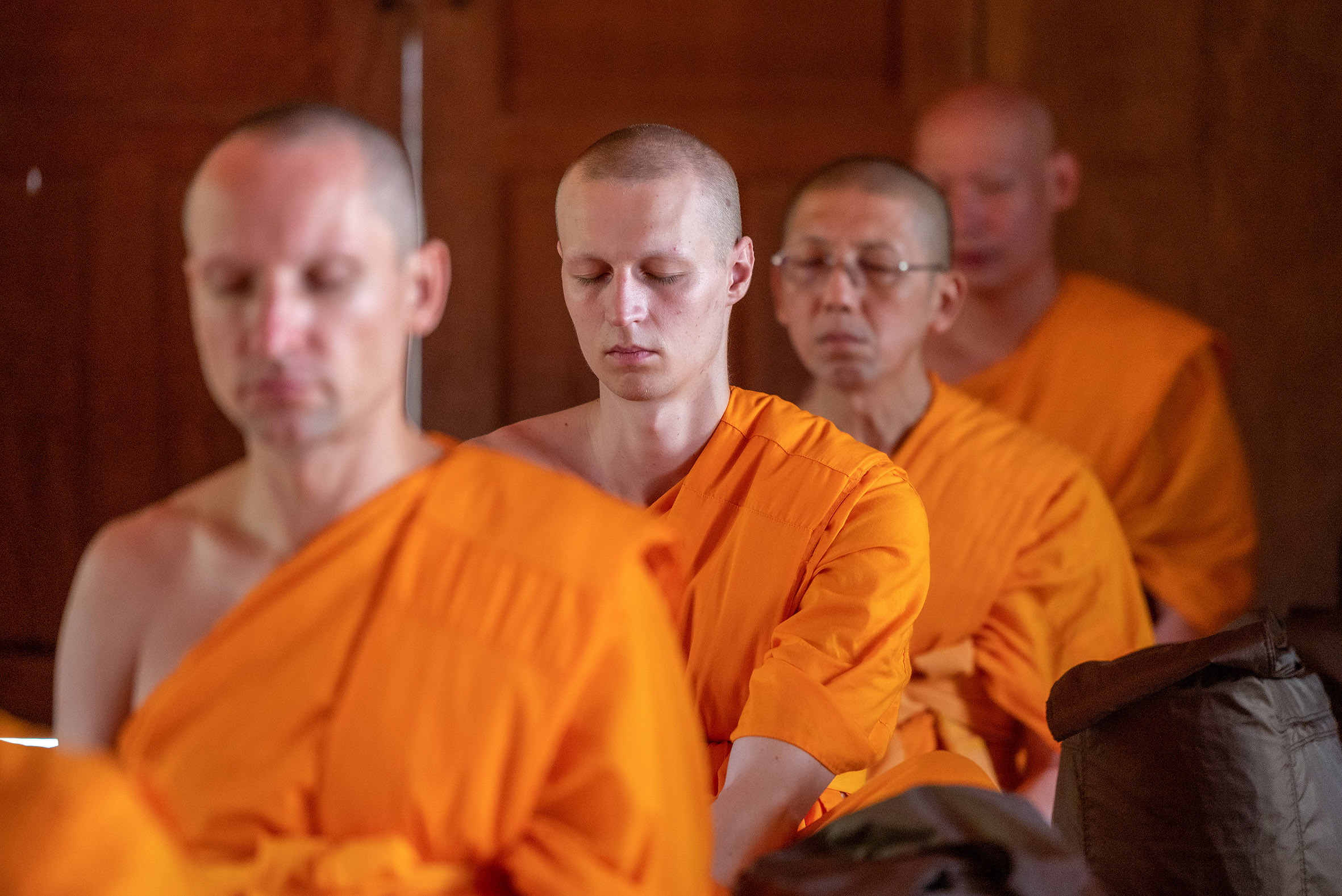
Theravada Buddhism
Buddhism, founded over some 2500 years in ancient India, is the doctrine of the Buddha. It can be viewed as an educational system aiming to holistically develop the quality of human life through the development of morality, mind and wisdom.
Understanding the Buddha’s teachings and put them into practice properly, one can make progress toward his journey of liberation – the total eradication of greed, hatred and delusion.
Theravada (Southern Buddhism) is a highly conservative form of Buddhism. Its doctrine has undergone very little alterations since the origin. Its canonical scriptures are closed and preserved in Pali language.
This tradition of Buddhism is widely practice in Thailand, Sri Lanka, Burma, Cambodia and Laos. Comparing to other schools of Buddhism, Theravada can be regarded as generally closer in teaching and practice to early Buddhism.
Mahayana (Eastern Buddhism) is more liberal and extremely diverse than Theravada. Its scriptures are still open and preserved in Chinese. Geographically, majority of its followers are founded in China, Tibet, Korea, Japan and Vietnam.
Mahayana followers may choose to stay in the cycle of samsara out of compassion for others while Theravada followers may lean towards self-liberation and break free from the cycle of existence.
Meditation Technique
Meditation is the heart of monkhood. Prescribed by the Buddha as the main practice, meditation purifies and quiets the mind, and deepens one’s wisdom. As a fundamental pillar, it will be the main focus of the program. We practice the Sati & Sabai method taught by most Venerable Luang Bu Wat Paknam, a method with emphasis on placing one’s attention at the center of the body while maintaining the proper balance of relaxation and concentration. A simple yet effective method whose continued practice will deepen inner peace and happiness, and heal the body and mind.
Ordinants do not require any prior knowledge or skills. There will be four guided meditation sessions daily, and mentor monks are available for questions throughout the day.
The Middle Way Meditation is based on the ancient concept of the Middle Way, which was taught and practiced by the Buddha to attain Enlightenment. In his first teaching given to the five disciples more than 2,500 years ago, the Buddha referred to the Middle Way as a key path leading to Enlightenment in the discourse named “Dhammacakkappavattana Sutta” (Setting in Motion the Wheel of the Truth), in The Samyutta Nikaya.
The Buddha explained that two extremes should not be followed by those who have gone forth from worldly life: sensual indulgence, which is low, coarsea and vulgar; and self-torture, which is painful, ignoble, and unprofitable. Instead, the middle way, which is understood by the Tathāgata, after he had avoided the extremes, produces vision, knowledge, and leads to calm, penetration, enlightenment, and nibbāna. The noble eightfold path, which includes right understanding, right thought, right speech, right action, right livelihood, right effort, right mindfulness, and right concentration, is the middle way understood by the Tathāgata that produces vision, produces knowledge, and leads to calm, penetration, enlightenment, and nibbāna.
Luang Pu Wat Paknam, a celebrated meditation teacher in Thailand, rediscovered The Middle Way meditation method. He explained that around 500 years after the Buddha passed away, the understanding of The Middle Way as a meditation method, and not just a life philosophy, was fading away. Buddhist monks and lay people in those times only practiced a life of moderation without understanding the deeper meaning of the Middle Way.
Luang Pu Wat Paknam became a monk at 22 years old and was always curious about what actually happened under the Bodhi tree when Prince Siddhatta became the Buddha. For 11 years after his ordination, Luang Pu Wat Paknam learned and practiced earnestly with many well-known meditation masters in Thailand during those times. On the full moon day of September 1917, he rediscovered the Middle Way Meditation method. He discovered that the deeper meaning of the Middle Way is to be found at “The Center of the Body”. It’s not only about living a balanced life, but it also refers to the spot where Prince Siddhatta rested his awareness during meditation on the night he became enlightened as the Buddha.
The point of entry to the Middle Way lies around two-finger widths above the navel on the central axis of your body. It works as a “Focal Point of Consciousness” similar to the focal point of a magnifying glass that can harness the maximum power of the sun. The center of the body can harness the maximum power of pure consciousness or the inner sun. It is not something you are expected to believe on faith, but rather something to experience through the practice of meditation.
